(June 17-23 is National Pollinator Week.)
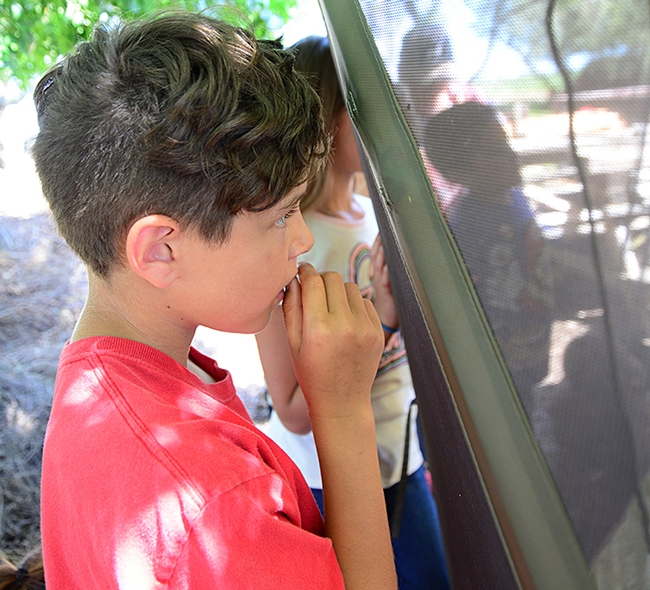
"How many? Does anyone know?"
No one did, but by the end of the Pollination Education Program, sponsored by CAMBP, all 72 youths from the Sutter Creek and Ione area of Amador County did: 20,000.
They also learned that there are 4000 species of bees in the United States, 1600 species in California, and 350 in Yolo County.
And they learned that pollinators include honey bees, bumble bees, butterflies, sweat bees, hummingbirds and syrphid flies.
"Can you all say entomologist?" Mather asked. "Does anyone know what entomology means?"
"Insects," said one youth.
"Yes, entomology is the scientific study of insects," Mather told them. That's what each and everyone of you is today: entomologists! Okay?
She explained the life cycle of a bee: from egg to larva to pupa to adult. "Males are called drones," she said. "Females are called worker bees."
Toward the end of the program, Mather told the students: "You are ready for the university. As soon as you graduate from high school, I hope to see you guys here. You are all excellent, very respectable, responsible and mature scientists. I want you to please take the knowledge that you gathered here today and share it with family and friends."
The Pollinator Education Program (PEP), developed two years ago by CAMPB director and Extension apiculturist Elina Lastro Niño of the UC Davis Department of Entomology and Nematology, along with staff research associate Bernardo Niño, aims to provide a fun, immersive educational experience "to help kids of all ages understand the importance pollinators play in the lives of humans."
At the recent session, Mather shared data on native bees, explained the life cycle of a honey bee, encouraged students to be citizen scientists, and demonstrated how to carefully collect bee specimens with a bee vacuum in a catch-and-release activity.
Volunteer Robin Lowry managed the “Planting for Pollinators” and “Be a Beekeeper” station. Students tried on beekeeping suits and tested the equipment, including a smoker and hive tools.
Volunteer Julia Wentzel introduced the concept of "pollinator specialists" and engaged the students in creating a "pollinator" which they then used to transfer "pollen" to different shaped flowers. Diverse floral sources are integral to honey bee health, she said.
Matthew Hoepfinger, staff research associate in the Niño lab, opened a bee hive (inside a screened tent) and showed the students the queen, workers and drones.
Just before boarding the buses for home, the students sampled several varietals of honey. "This is really good!" a girl said. "I want more."
Ron Antone of the UC Master Gardeners of Amador coordinates the annual program, working with Amador school officials, parents and master gardeners. This year he coordinated two groups:
- Jackson Elementary. 62 third graders, 3 teachers, 2 aides, 3 parents and 2 Master Gardener volunteers from Amador County.
- Ione Elementary. 72 third graders, 3 teachers, 7 parents, 3 Master Gardeners and 3 volunteers from Farms of Amador.
The UC Davis Department of Entomology and Nematology operates the Häagen-Dazs Honey Bee Haven, with Elina Lastro Niño serving as the garden's faculty director and Christine Casey as the manager. Two others from the Niño lab--staff research associate Charley Nye, manager of the Harry H. Laidlaw Jr. Honey Bee Research Facility, and staffer Christine Torres--assisted with the pollinator education programs.
"It takes a village as they say," Mather said.
That it does.
A tip of the bee veil to CAMBP, PEP, the Niño lab, and the UC Master Gardeners of Amador County for their roles in educating youth about pollinators.
Attached Images:
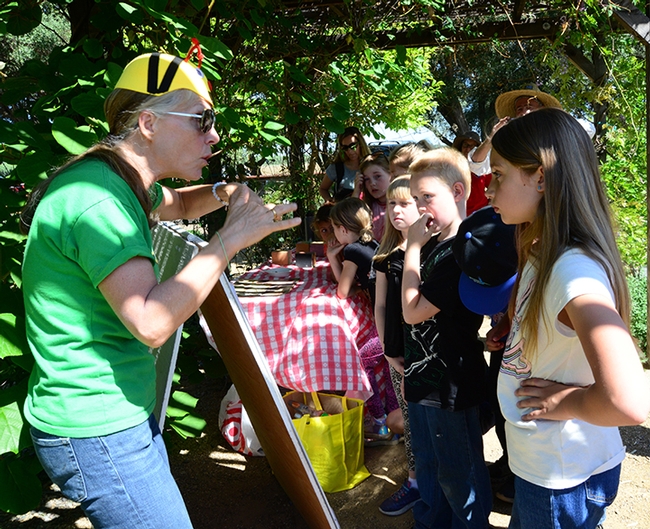
Wendy Mather (left) program manager of the California Master Beekeeper Program, explains the life cycle of bees to a group of third graders from Amador County. (Photo by Kathy Keatley Garvey)
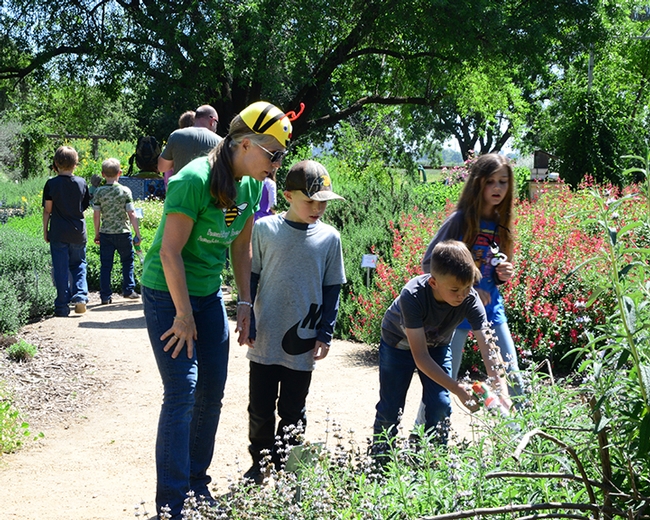
Wendy Mather (left) program manager of the California Master Beekeeper Program shows the third graders how to use a bee vacuum in a catch-and-release activity. (Photo by Kathy Keatley Garvey)
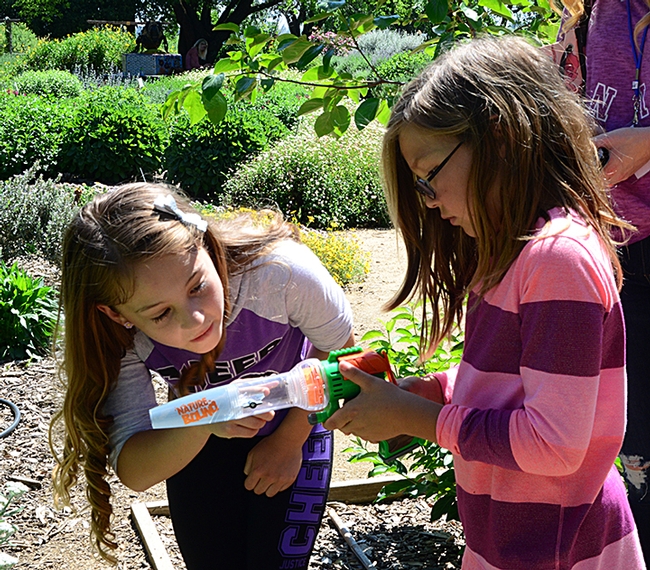
I can see the bee! There it is! (Photo by Kathy Keatley Garvey)
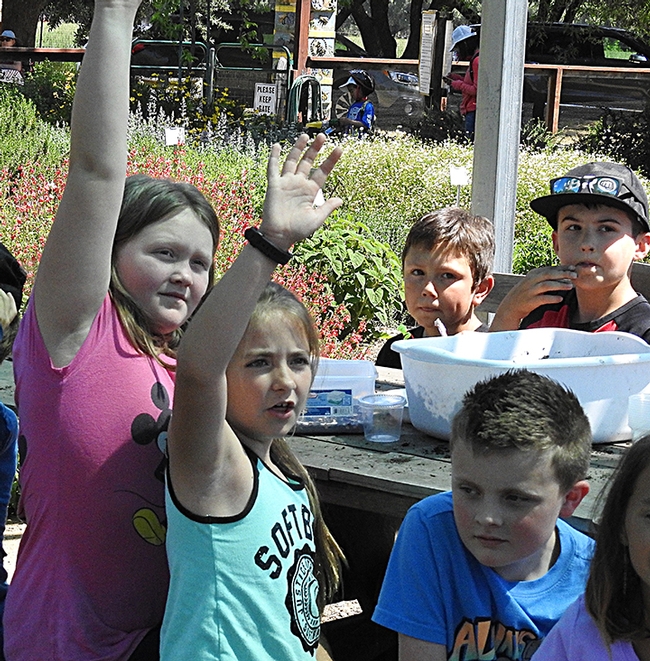
What kind of butterfly is this? The answer: Monarch! (Photo by Kathy Keatley Garvey)
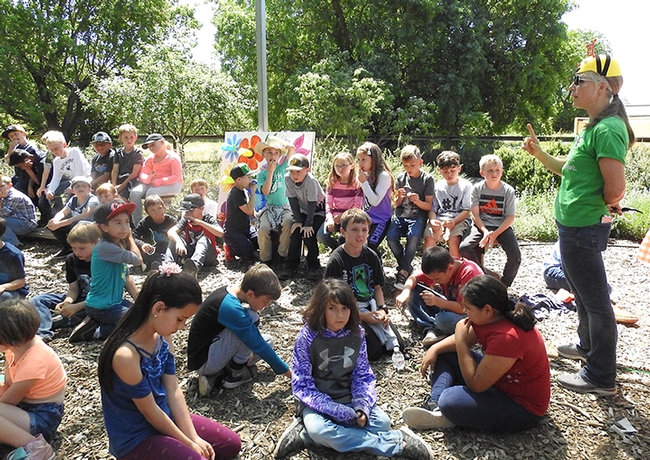
Wendy Mather, program manager of the California Master Beekeeper Program (CAMBP), tells the students she hopes to see them study entomology at UC Davis. (Photo by Kathy Keatley Garvey)
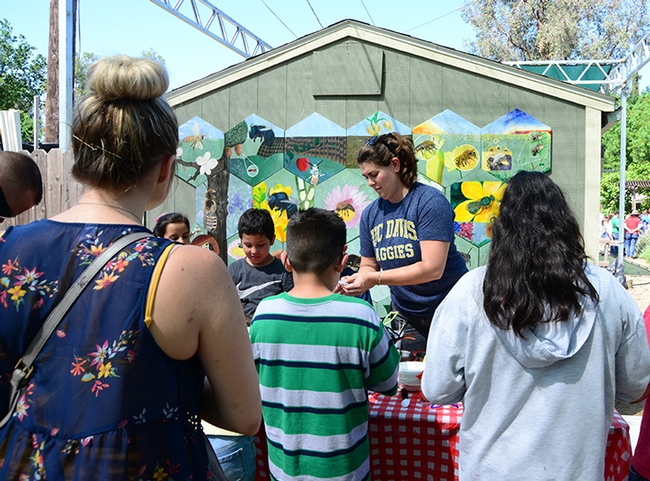
Volunteer Julia Wentzel introduced the concept of "pollinator specialists" and engaged the students in creating a "pollinator." They then transferred "pollen" to different shaped flowers. (Photo by Kathy Keatley Garvey)
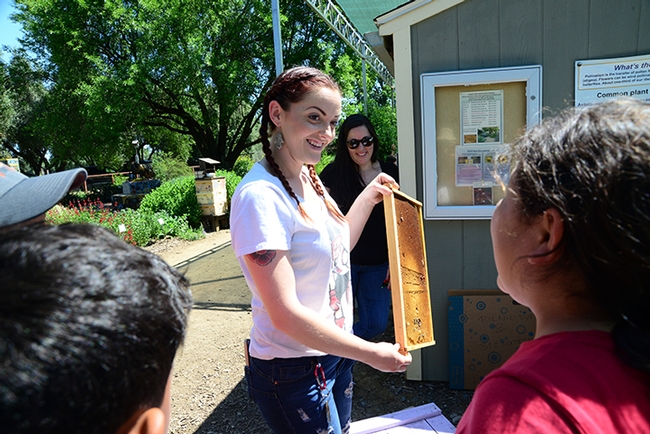
Volunteer Robin Lowry, who managed the “Planting for Pollinators” and “Be a Beekeeper” station, displays a frame. (Photo by Kathy Keatley Garvey)
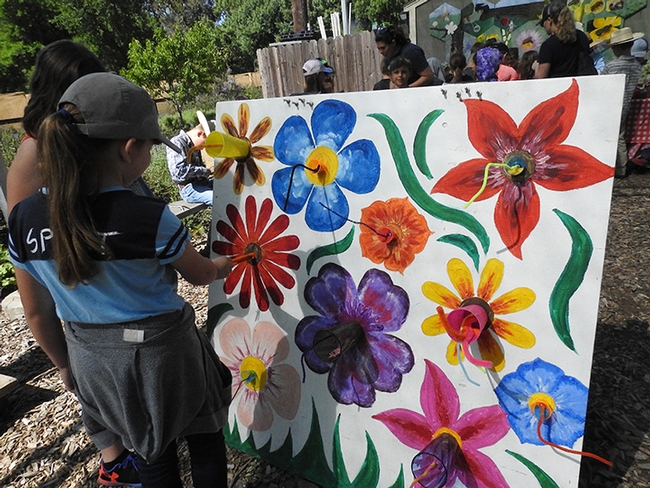
Students placed "pollinators" inside flowers. (Photo by Kathy Keatley Garvey)
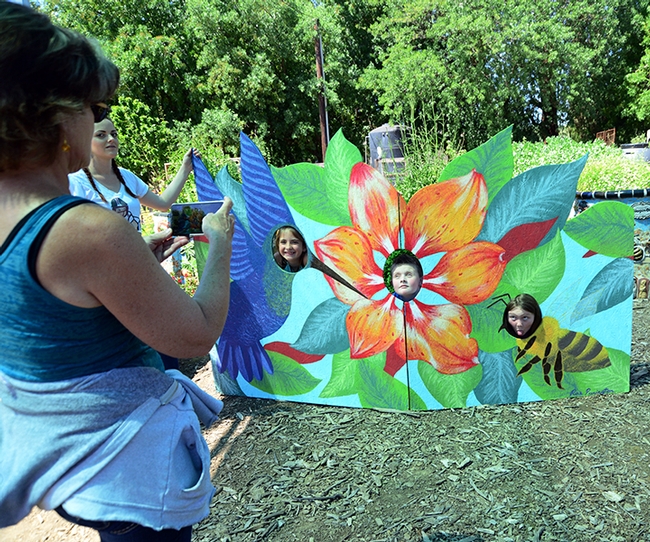
Time to take a photo! Don't say "cheese!" Say "honey!" (Photo by Kathy Keatley Garvey)
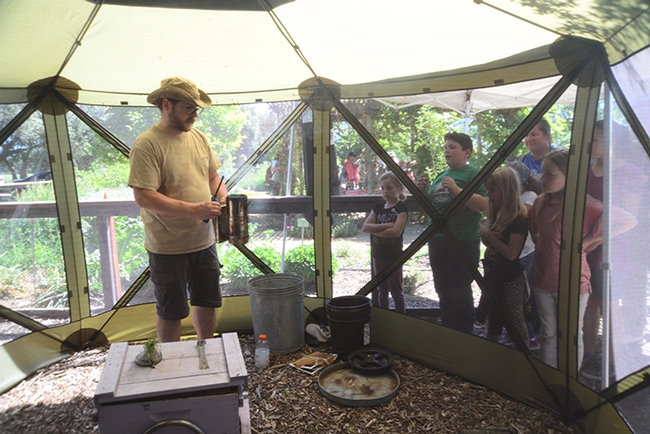
Matthew Hoepfinger, staff research associate in the E. L. Niño lab, presented the live bee demonstration. (Photo by Kathy Keatley Garvey)
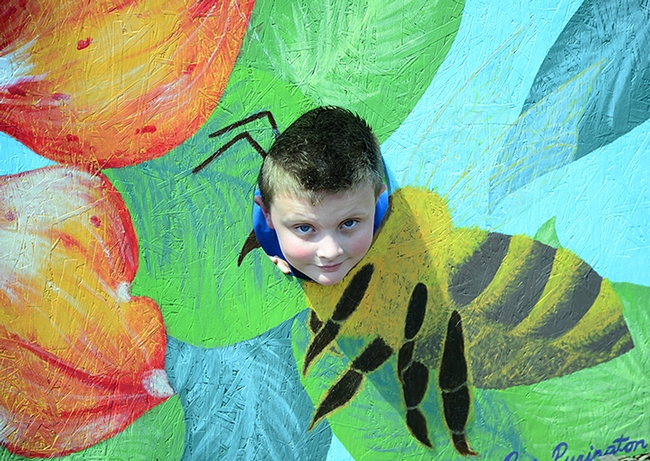
Hey, I'm a bee! (Photo by Kathy Keatley Garvey)
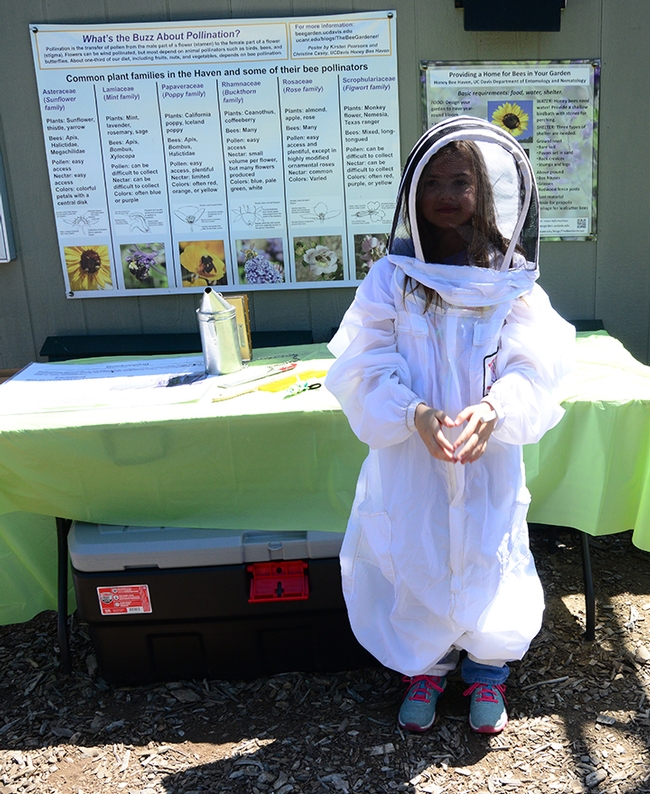
A little beekeeper shapes a heart. Students took turns trying on the beekeeper protective suits. (Photo by Kathy Keatley Garvey)